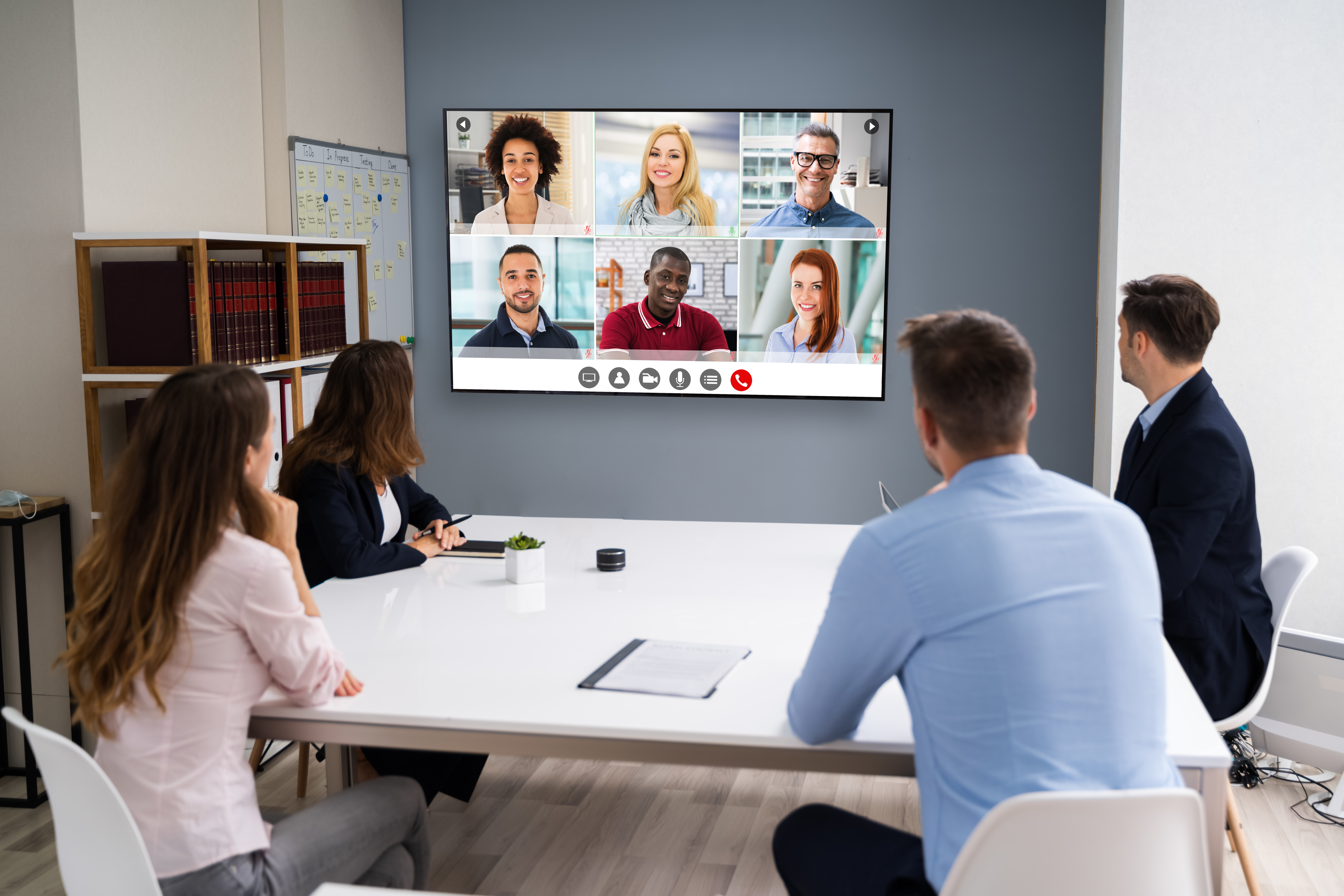Seven reasons to put your camera on in virtual and hybrid meetings
Despite the massive acceleration in use of virtual meetings, some people still don’t turn on their cameras in virtual meetings and workshops. They are missing an opportunity.
We’ve all seen the coverage of “zoom fatigue” and it can be tiring to spend all day on video. but it’s also tiring to get ready, commute to the office, sit in a face-to-face meeting all day and then commute home again. I’m sure that the total energy expended is lower for the video option.
It would also be ridiculous to imagine attending a face-to-face meeting and putting a bag over your head so people couldn’t see your facial expressions.
We are not proposing that you need to have your video on for eight hours a day. There may be some meetings or one-to-one conversations where video doesn’t add a great deal of value.
However, there are some powerful reasons why turning your camera on in many virtual meetings is good for you, good for your colleagues and better for the conduct of the meeting.
- It helps overcome proximity bias by making you more visible and memorable. Research shows that people remember what they see much more than what they just hear. If you only appear as a black screen or icon people may not even remember you with that
- It communicates your presence and engagement in the topic, it allows you to signal that you are engaged and interested
- It increases the likelihood of you being understood and prevents misunderstandings by transferring body language and intent
- It accelerates the building of trust and rapport. Research shows that virtual teams that share video build and maintain trust more effectively than those that don’t
- Being on video helps you hold yourself accountable, it makes you more likely to engage and discourages multitasking. Multitasking is one of the most counterproductive meeting behaviours
- Being visible allows you to support and actively listen to your colleagues by giving nonverbal feedback and encouragement. If you have ever tried talking or presenting into the void where you can’t see any audience reaction, this is extremely hard
- In a hybrid meeting where some people are live in the room and you are joining remotely, if you don’t share video you become effectively invisible. It’s unlikely people will remember to involve you, or even remember you were there
If you want people to turn on their videos, it’s important to set expectations early.
Start the meeting with video only. Get there early and encourage individuals as they join to turn on their cameras. Later people joining will be more likely to follow along once you’ve established the principle.
Doing introductions is a good way for people to start sharing their video, it’s very awkward to do an introduction without showing your face (which tells you something).
If you stop sharing slides when you don’t need them, such as during discussions it continues to reinforce camera use.
We also typically call on people by name to try and ensure but everyone gets to contribute and participate. We always ask people to at least share video when they are speaking.
It is noticeable as a facilitator how much more likely someone who isn’t sharing camera is to say “could you repeat the question” – which we all know means they were multitasking and not really listening!
We do appreciate that some people may be joining from areas with low bandwidth (companies really need to step up to help solve this problem and support higher bandwidth where they can), or may prefer not to share their backgrounds (although virtual backgrounds offer a simple alternative in this case).
Our conclusion though, from over 15 years of running virtual meetings and webinars and looking at the research in the field, is that sharing video is good for you, good for your colleagues and good for the conduct of the meeting.
How we look, sound and behave on video is now a critical element of how we create an initial impression and stay visible and we need to think about how we manage this, both as individuals and organizations.
How do you get people to turn on their cameras?
See more about our virtual and hybrid meetings training.

Explore our training programs to see how we can help.
Agile & Digital Training Matrix Management Training People and purpose Training Virtual Teams TrainingEducate yourself further with a few more or our online insights:
30 years of experience learning with a range of world class clients
We work with a wide range of clients from global multinationals to recent start-ups. Our audiences span all levels, from CEOs to operational teams around the world. Our tools and programs have been developed for diverse and demanding audiences.

Tailored training or off the shelf modules for your people development needs
We are deep content experts in remote, virtual and hybrid working, matrix management and agile & digital leadership. We are highly flexible in how we deliver our content and ideas. We can tailor content closely to your specific needs or deliver off the shelf bite sized modules based on our existing IP and 30 years of training experience.
For more about how we deliver our keynotes, workshops, live web seminars and online learning.